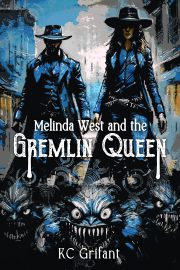Romancing the B Story
By Holly Henderson
Romancing the Beat by Gwen Hayes, in its author’s words, explains how to write a kissing book. But that’s not all it does. Hayes gives the recipe for adding romance to any plot, and the expansive worlds of science fiction and fantasy have plenty of room for a satisfying B story of love, desire—or both.
From recent New York Times Best Selling series such as Crave by Tracy Wolff and A Court of Thorns and Roses by Sarah J. Maas to classics like The Lord of the Rings, adding romance raises the tension and stakes of the main plot while showing a different side of the adventuring protagonists.
And just like the main plot, romance needs setup. While the B story generally starts around 25%, the earlier a romantic interest is introduced, the longer the protagonist (and the reader) has to fall in love with them. What’s the backstory between the characters, if any? Why aren’t they already together? Are they against falling in love in general? Or is it this person in particular? (Enemies to lovers, anyone?)
From setup to epilogue, all Hayes’s beats are useful for a fully fleshed-out arc, but for sci-fi and fantasy writers, there are a few that stand out.
Adhesion: why neither character can walk away
“Adhesion” is where the romance really gets going for sci-fi and fantasy. In the romance genre, it thrusts (no pun intended) the plot into the second act, like Blake Snyder’s “Break into 2” from Save the Cat! It requires the love interest to come along for the journey somehow and—this is the important bit—be inextricably linked to it.
As Hayes says, “Make sure your glue is sticky here.” I’ll add, “So your love interest can’t slip away.” Otherwise, when the going gets tough, they’ll get going. This also ratchets up the tension because now the protagonist has another (highly emotional) problem to deal with on top of their already-full plate of fulfilling their destiny.
Liselle Sambury’s Blood Like Magic is a perfect example. Protagonist Voya’s main arc is learning to trust herself, but the decision she must make is whether to kill her first love or lose her family’s magic forever—when she’s never fallen in love before. Her romantic interest becomes an unavoidable part of the plot, as much as she wants to avoid him.
Deepening Desire: showing glimpses of who they really are
“Deepening Desire” is part of the romantic “Fun and Games.” The characters must first question their assumptions about the other person or their beliefs about love, but the payoff is that the relationship gets juicy. They’re bonding as they learn more about each other and themselves—who they really are. This will look different depending on what your main story is, but it always leads to thoughts of, “Maybe this could work?”
“Deepening Desire” adds a layer of complexity to your characters’ relationships—how others feel about them together, how their relationship affects the plot as well as their decisions. It shows a different, softer side to the protagonist, who has to be strong the rest of the time. They live in a speculative world, but in the end, they’re human (or at least have human-like feelings).
Break Up: the black moment of fear
After an “Inkling of Doubt” is introduced to the romance, the protagonist will “Retreat” and put their “Shields Up.” Then comes the “Break Up.”
Akin to “All Is Lost” (from Jessica Brody’s Save the Cat! Writes A Novel), this beat gives the protagonist an extra gut punch to mull over during their “Dark Night of the Soul.” Not only did they fail at their task, but they lost their love, too.
Even if you don’t have a relational breakup, the potential to lose their lover still ups the stakes for your protagonist. In sci-fi and fantasy, “The Break Up” could be a forced separation, death, or the threat of either. Just be sure you tie the external plot point into an emotional beat so it drives your protagonist’s character growth.
One of my favorite scenes that broke my heart is from Crush, the second book in the Crave series by Tracy Wolff. (Spoiler alert!) Protagonist Grace is attacked, the bond with her partner forcibly broken, and it literally shatters both their souls.
Grand Gesture: time to save the world and their love
After your protagonist’s “Wake Up” moment of “I need to fix this,” it’s time for a “Grand Gesture.” Hayes describes it as “life or death now,” which is often literal in sci-fi and fantasy. The protagonist must put it all on the line to save the world and their love in one fell swoop.
Romance novels, in particular, are known for their happily-ever-afters. That can be a satisfying ending, but it’s not always necessary. The “Grand Gesture” can also show what the protagonist has learned to cap off a positive character arc.
In The Hunger Games, for example, Peeta and Katniss have a typical romance arc up until they get home. Then their relationship development comes to a screeching halt. But the “Grand Gesture” of the berries! Who could forget that? (Also, Peeta is introduced early on in the novel, but he doesn’t become important to Katniss until the B story starts with Peeta being chosen as the other tribute—talk about some sticky “Adhesion” glue.)
Follow the recipe but measure with your heart
Keep in mind whether your romantic B story will be across one book or a series. Over multiple books, these beats will repeat in different ways as the relationship deepens.
Using “Adhesion,” “Deepening Desire,” “Break Up,” and “Grand Gesture” for a romantic B story assures the relationship doesn’t become unimportant (or worse, uninteresting) in the shadow of the main plot. Like any successful arc, these beats give the romance a page-turning shape that readers want.
Romancing the Beat by Gwen Hayes gives the recipe. It’s up to you to bake it in and add your own special sauce.
 Holly Henderson is an award-winning poet, Georgia-based freelance writer, and novelist who writes introspective fantasy stories. If you’d like to connect, you can find her on LinkedIn or Instagram @hollyhenderson.writer.
Holly Henderson is an award-winning poet, Georgia-based freelance writer, and novelist who writes introspective fantasy stories. If you’d like to connect, you can find her on LinkedIn or Instagram @hollyhenderson.writer.


